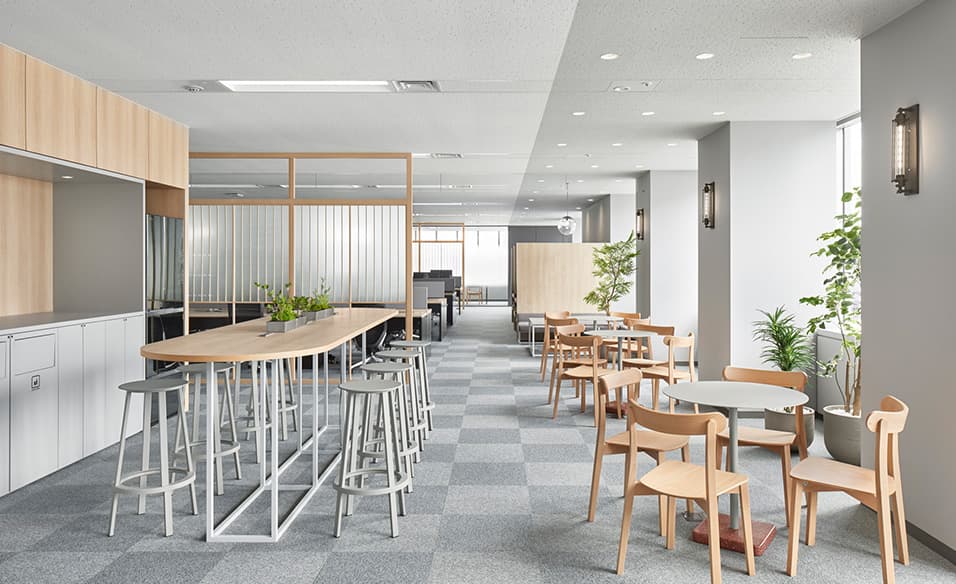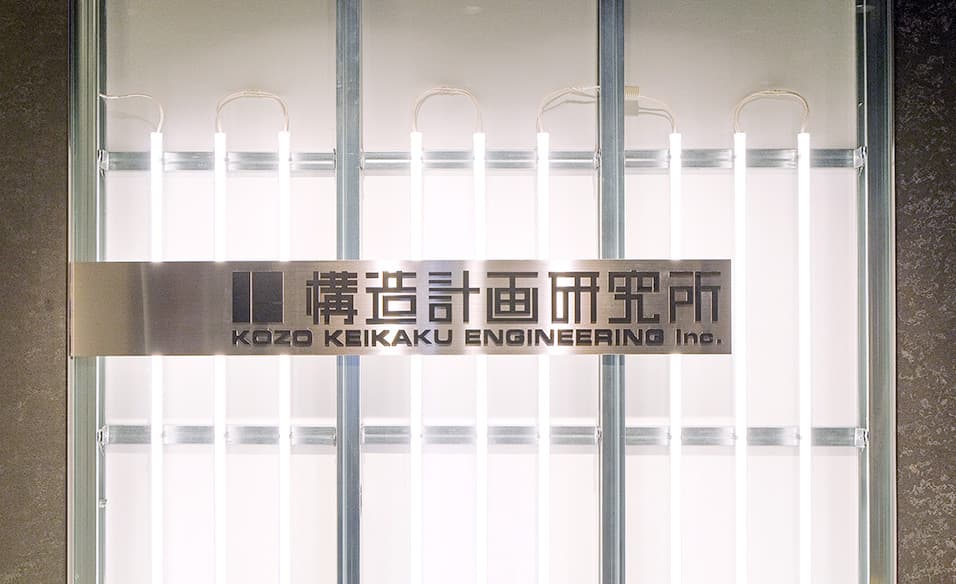History
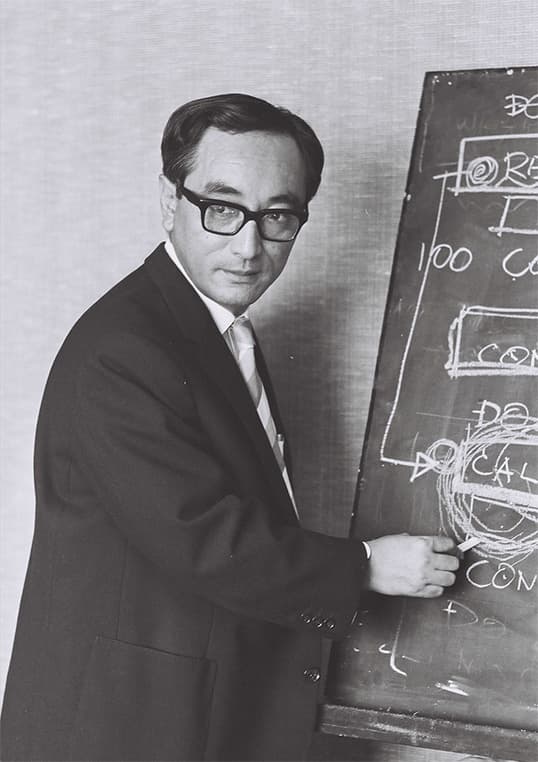
As "a design and engineering company that bridges academia and the industrial world," KKE seeks to solve a wide breadth of social issues.
We have been responding to the needs of the times while adhering to its founding philosophy.
Here is the 60-year history of the company, which has expanded its business beyond the construction industry into a variety of fields through the use of computers.
19561960's
The time of the founding of KKE.
Started as a private structural design office, KKE has pioneered the use of digital computers in the industry.
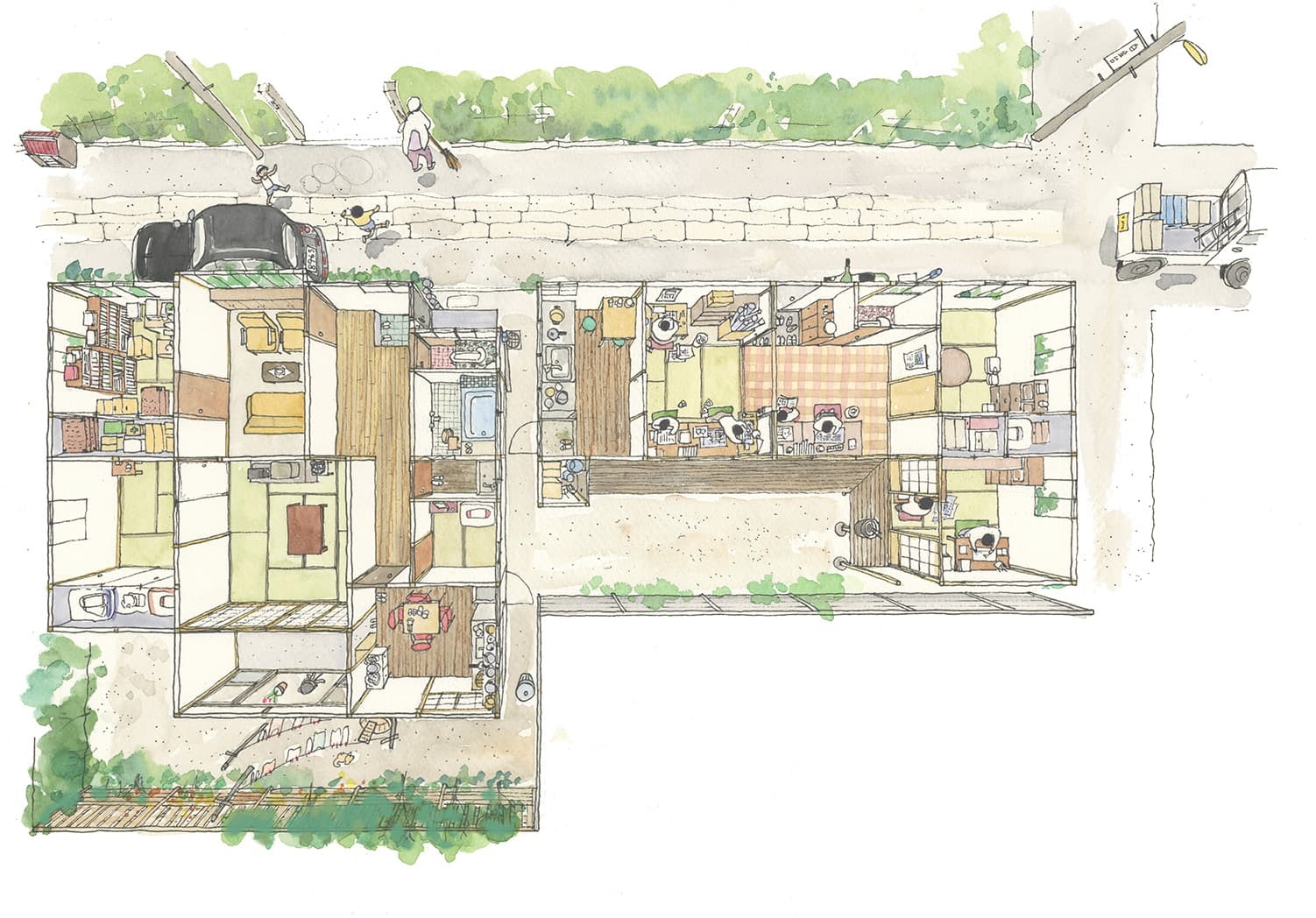
Floor plan of the office at the time
Illustration: Eri Nakada
1956
Our Root, Kozo Keikaku Structual Engineering Firm by Dr. Makoto Hattori
KKE has started as a university venture company founded by Dr. Makoto Hattori, who was engaged in structural design research as an assistant in the laboratory of Professor Tadashi Taniguchi, Department of Architecture, Tokyo Institute of Technology. In the beginning, there were just two people, Dr. Makoto Hattori and one other colleague, with drafting boards in his own living room at 1-768, Kamiosaki, Shinagawa-ku, Tokyo. When the number of employees increased to about 10 in two years, he rented a house next to his house to expand the office.
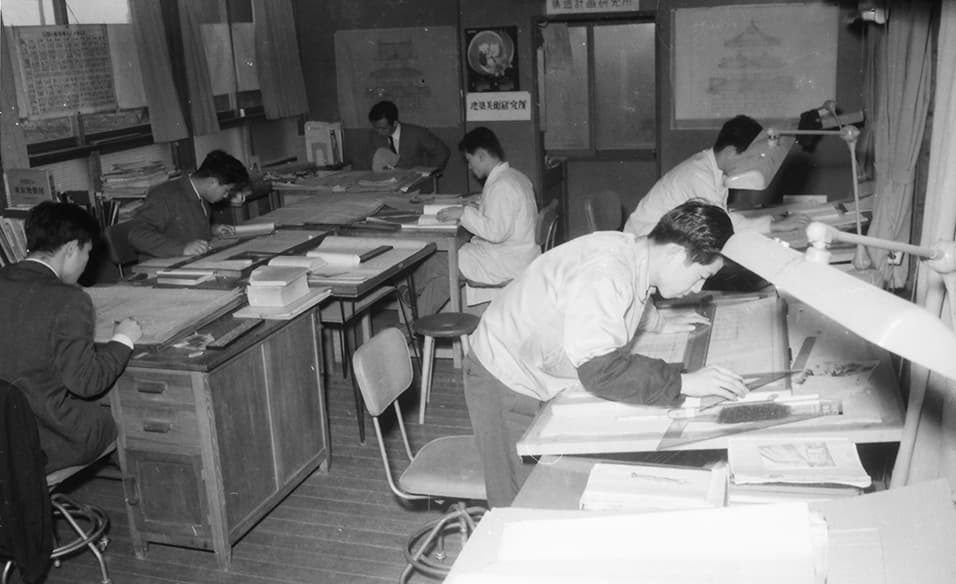
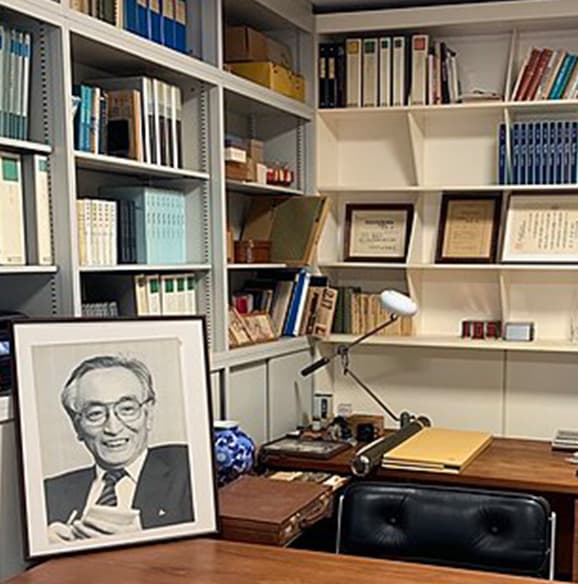
Memorial Room for the Founder Dr. Makoto Hattori, now in the Central Office of KKE
1959
Founding of Kozo Keikaku Engineering Inc.
His goal to play a role as a bridge to give the university's research results back to society has led to the establishment of the Kozo Keikaku Engineering. Soon after its founding, an article about computer-aided structural calculations in an academic journal published in the U.S. has given him recognition to a great potential of computers, and has encouraged him to leave for the U.S. with the vision.
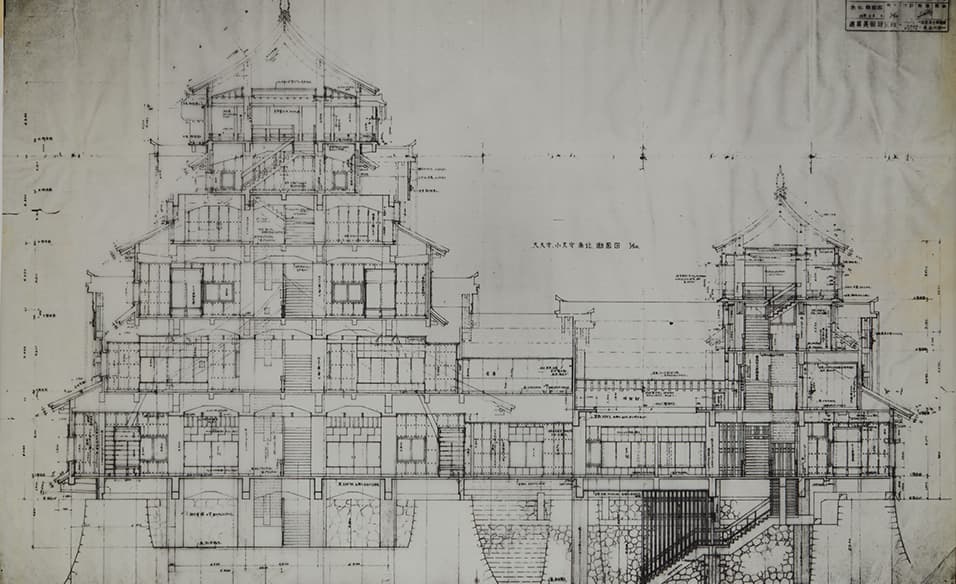
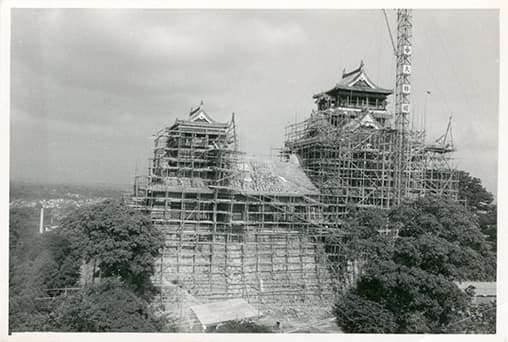
1960s
A Boom in Rebuilding the Castle Towers
From the late 1950s to the early 1960s, there was a boom in rebuilding the castle towers throughout Japan as a symbol of postwar reconstruction. Under the guidance of Professor Michio Fujioka, an expert in the history of Japanese architecture, KKE was involved in the reconstruction of castles all over Japan, starting with the structural design of Wakayama Castle, Kumamoto Castle, Odawara Castle and many others. Restoration of castles was different from ordinary structural design in that it is complex, requiring special care and high technical skills, since the work must be carried out surrounded by numerous cultural assets such as stone walls and moats that have to be carefully preserved.
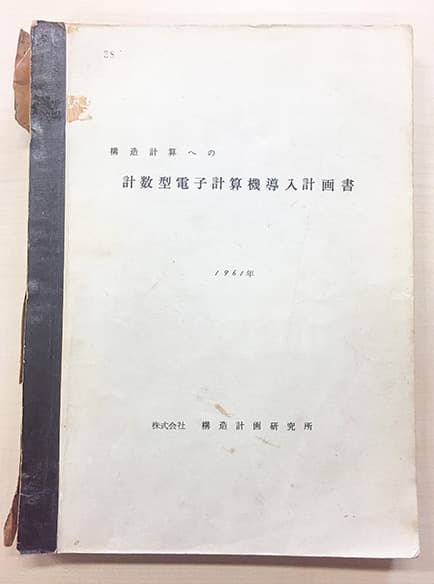
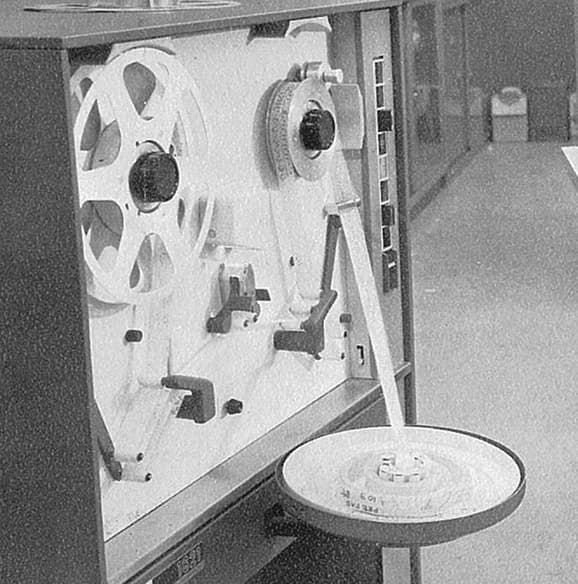
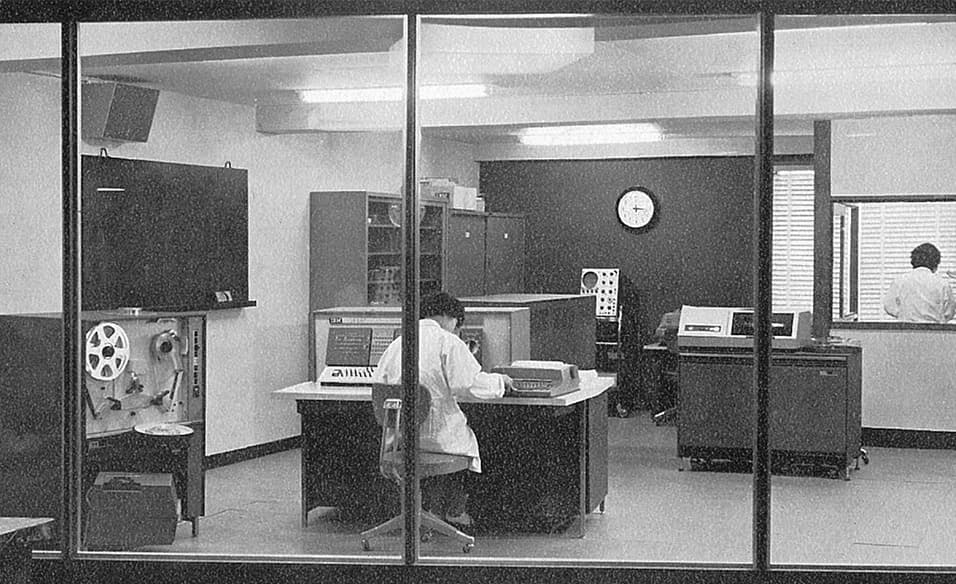
Computer room at the time.
1961
Introduction of IBM1620
"It's time to get rid of the busyness of structural design work so we can focus on more valuable work." With such dream and a sense of mission, Dr. Makoto Hattori headed for the United States tostudy under Professor Newmark at the University of Illinois in 1960. Immediately after his return to Japan, he became the first in the industry to install a state-of-the-art digital computer, the IBM 1620. The monthly rental fee alone was 600,000 yen, and the average starting salary was 12,000 yen at that time. Since fire insurance was mandatory for installing expensive computers, the head office was allocated from a wooden building to a reinforced concrete building in Torigoe, Taito Ward.
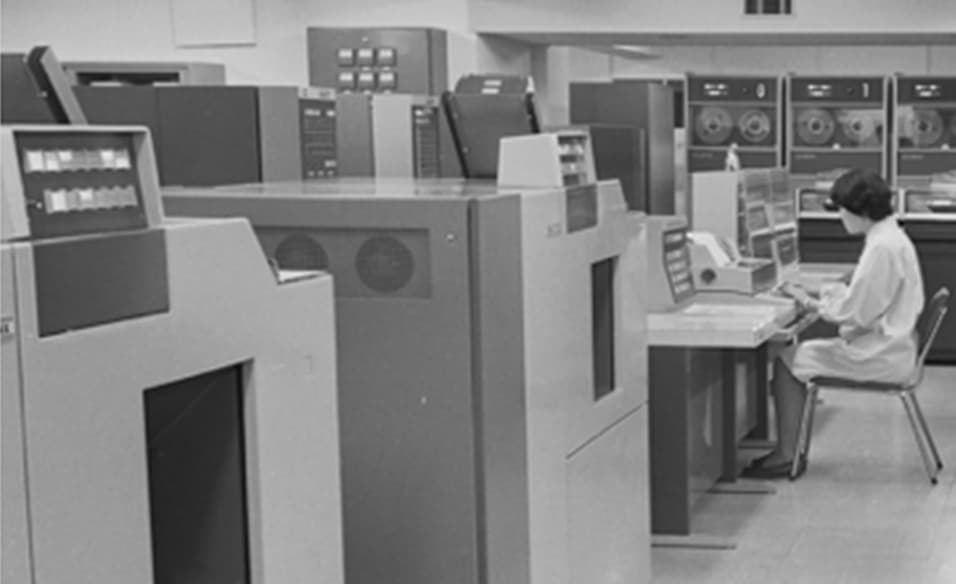
Introduction of FACOM230/60
The late1960s
Contribution to the Development of Japan-made Computers
He supported Dr. Kaoru Ando, who had moved from Managing Director of IBM Japan to Fujitsu. He also supported Mr. Toshio Ikeda, one of the university seniors of Dr. Makoto Hattori at the university, in the development of the operating system (OS) for the development of Fujitsu's FACOM series, a pioneer of domestically produced computers in Japan. Dr. Hattori also started a software development business for engineering. In 1969, he introduced the FACOM230/60 within the company which contributed to the development of domestically produced computers.
1967
Development of Framework Structural Analysis Software "STAN"
Using the aforementioned large computers, KKE developed STAN, a three-dimensional framework structural analysis software for use in structural design and analysis consulting practices, and has continued to improve and develop the softwarethat corresponds to the demands and requirements of society, which has led to the development and sales of the current software package for personal computers.
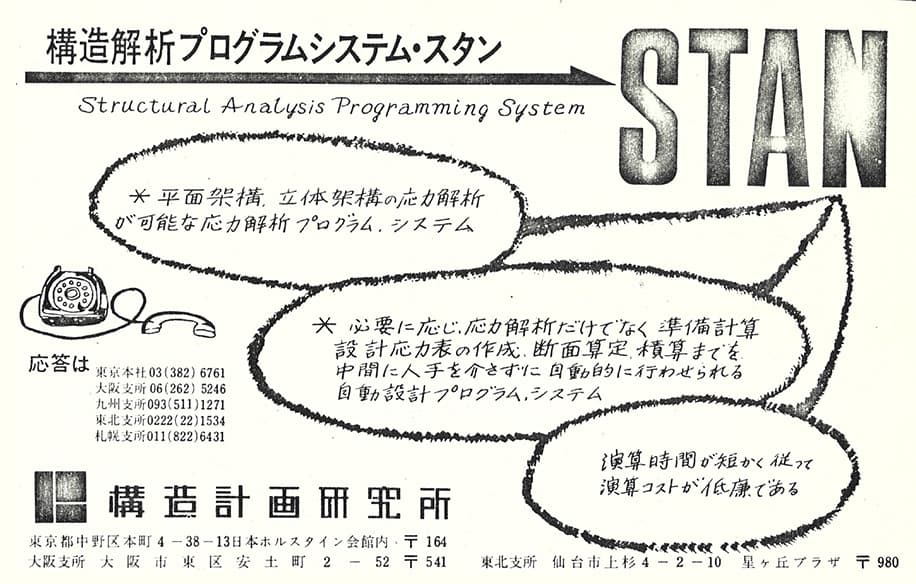
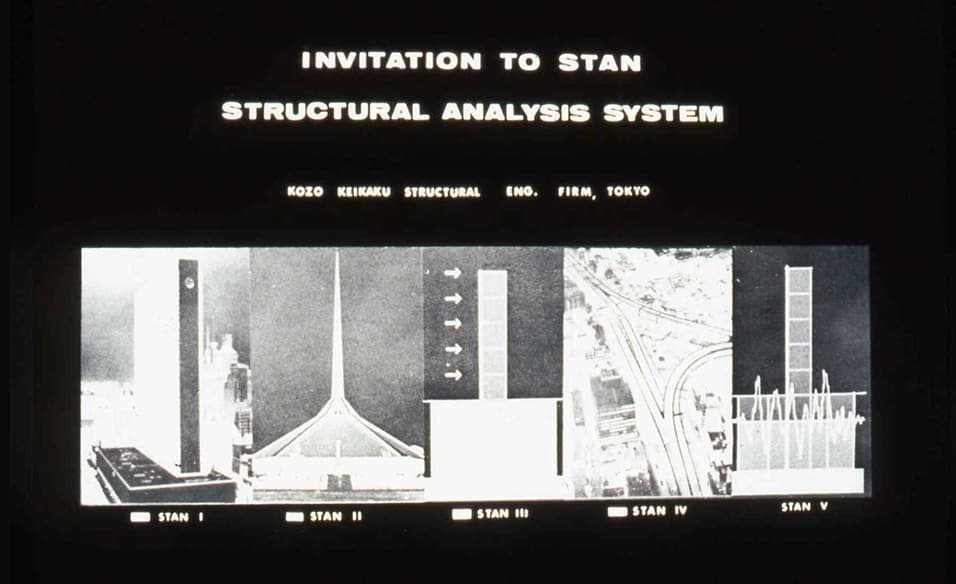
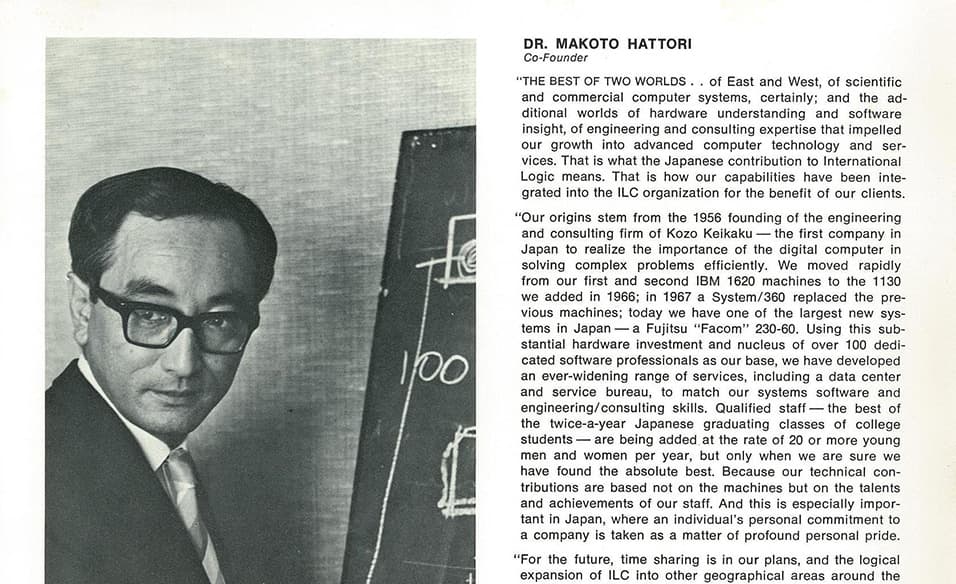
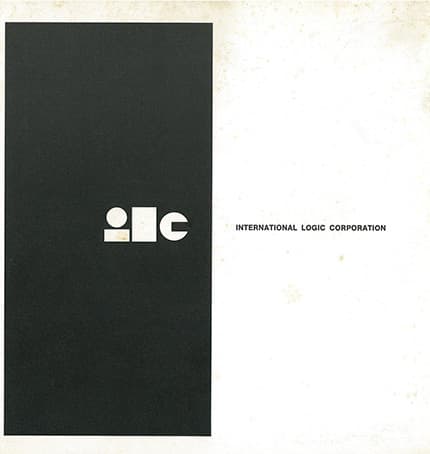
1969
ILC Established in the U.S.
In order to expand the sales of the self-developed software "STAN" in the U.S., and to gather the latest information, KKE took a stake in International Logic Cooperation (ILC) in San Francisco. At the same time, KKE started contract development of software. A newspaper article at the time said, "This is noteworthy as it opens the way to the export of intangible products that sell brains." While the software market had not yet matured in Japan, KKE took on the challenge in the United States, the home of software.
1970's
In the 1970s, KKE took on the challenge of utilizing computers and fostering the software industry. The scope of our business gradually expanded to include operations and industries other than structural design alone.
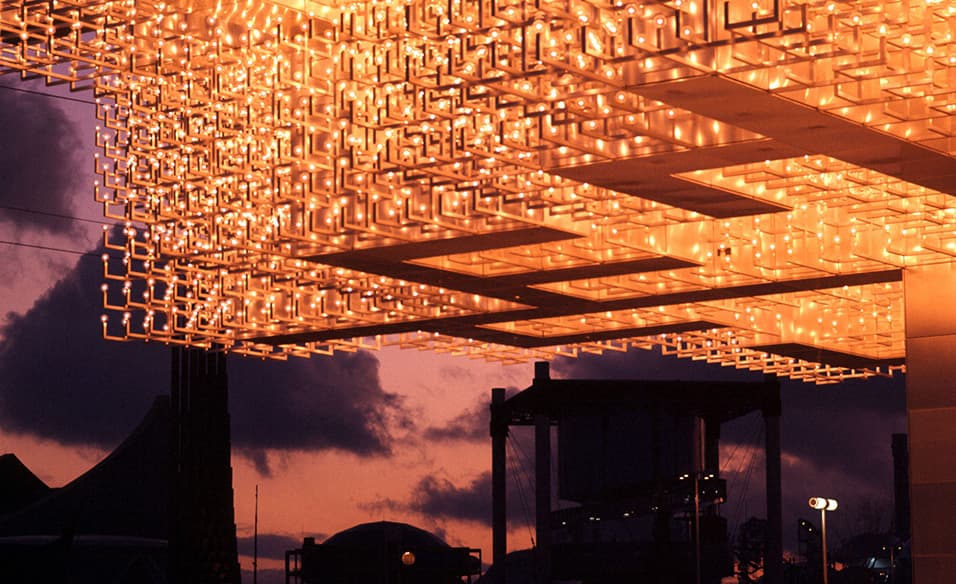
Courtesy of the Mainichi Newspapers Co., Ltd.
1970
Construction of the Osaka Expo Pavilion
Among many up-and-coming architects designed pavilions for the EXPO'70, Dr. Hattori worked on the Swiss, French, Hong Kong, and Tanzanian pavilions, and served as a co-engineer for overseas architects. The Swiss pavilion, "the Tree of Light," created using more than 30,000 light bulbs, was particularly eye-catching and unique. It was a highly technical design, with a special steel frame supporting a 23-meter-long branch that extends from a 5-meter-diameter trunk on one side.
1970s
Computerized Drawing Representation
After the introduction of the in-house-developed software "STAN," KKE started research on automatic drafting of structural calculation results. While most of the output devices for calculation results were dot printers for printing text at that time, KKE introduced the IBM 2250, a state-of-the-art and expensive graphic display, and a huge pen plotter (X-Y plotter) device from Gerber. The IBM2250 was a cathode-ray tube display with a touch pen that had the capability to display lines and letters. There were only a few of these state-of-the-art plotters in use in Japan at that time.
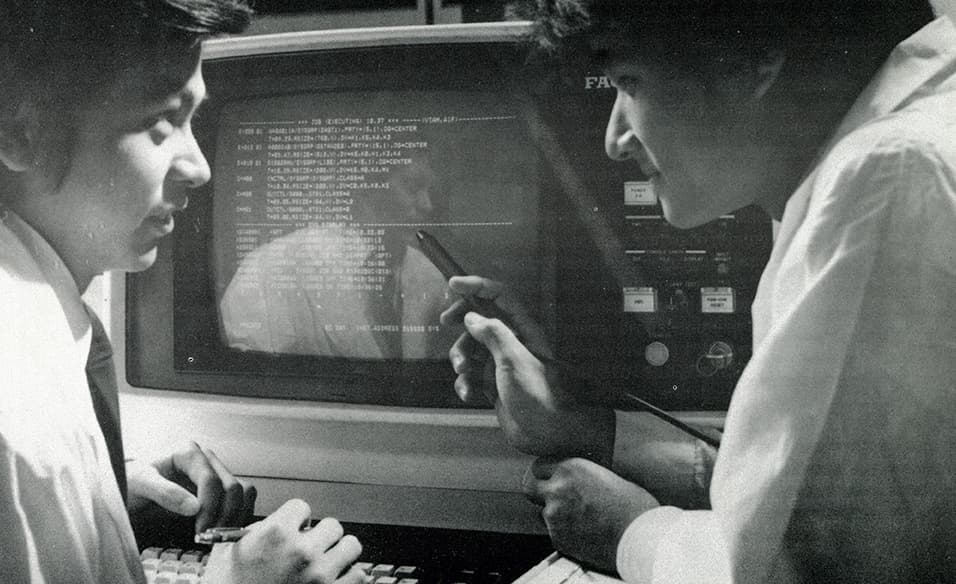
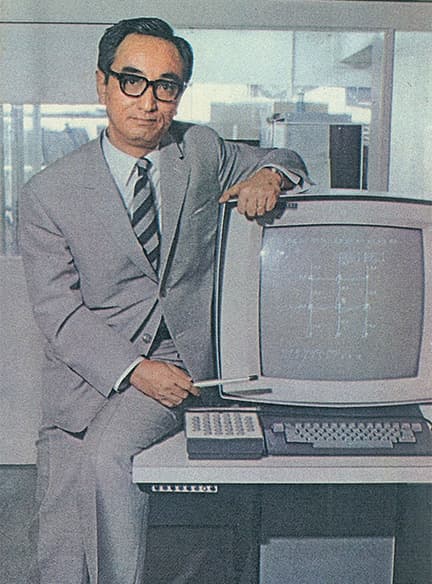
1971
Development of DEMOS Library for Nippon Telegraph and Telephone Public Corporation
At that time, computers were available only to a limited number of people due to its high price, such as large corporations and research institutes; but then came an epoch-making scientific and technical computing service system, DEMOS (Dendenkosha - Multi access Online System), has been introduced, which allows small and medium-sized businesses to access the domestic high-speed computer DIPS-1 through telephone lines. KKE was commissioned to develop an application for architectural structural design in DEMOS and also worked on contract development. With little experience in contract development, KKE was able to complete the project through trial and error. This experience became the cornerstone of its subsequent system development for housing manufacturers.
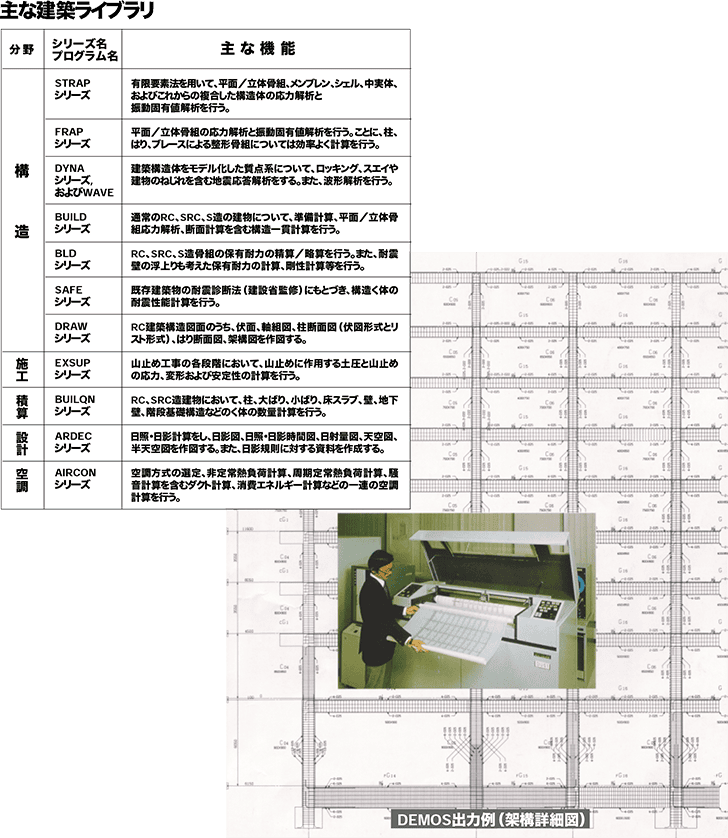
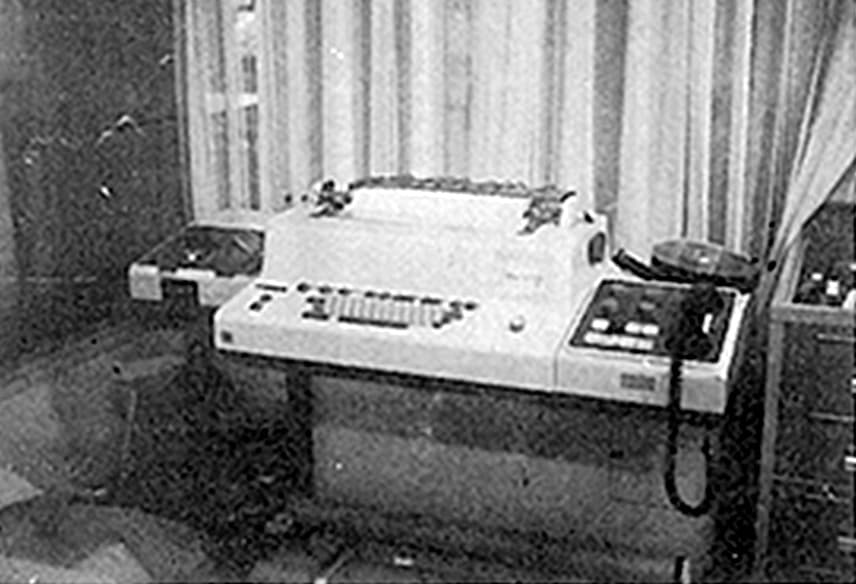

1971
Establishment of Nippon Minicomputer Corporation (later known as Nippon Data General)
In the 1970s, small minicomputers that could be used in laboratories and small and medium-sized companies replaced the large mainframe computers that occupied the floors of buildings. Sensing the potential of this computer, Dr. Makoto Hattori established Nippon Minicomputer Corporation, a national policy concern, together with Morihiko Hiramatsu, then director of the Information Processing Promotion Division of the Ministry of International Trade and Industry (MITI) (and later governor of Oita Prefecture). The founding document of the company at that time stated its mission as follows: "It is the mission and aspiration of the new company to co-develop and manufacture mini computers as a component to realize our own needs as much as possible with people of like mind, and to be able to contribute to the core business of each company with satisfaction."
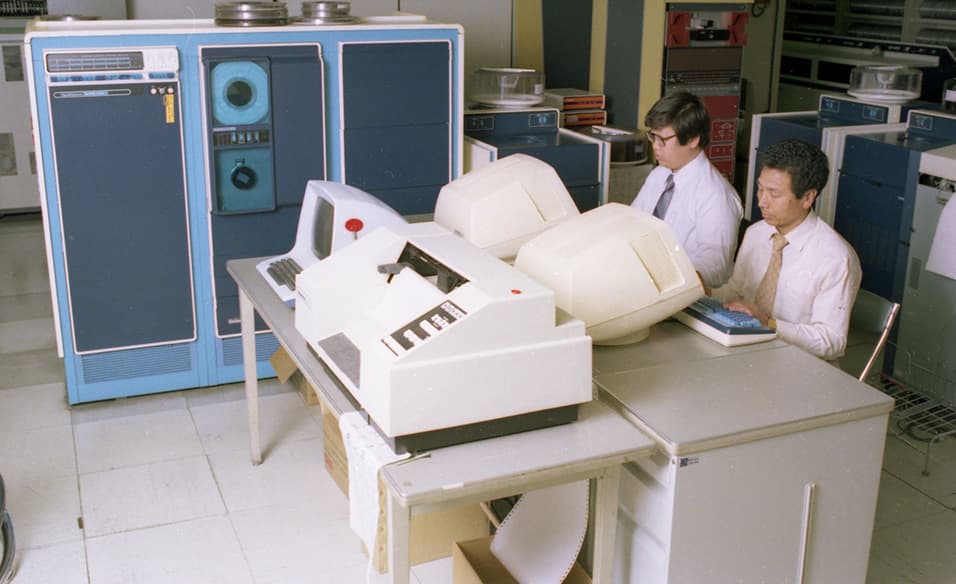
1972
Launch of the Japan Software Industry Association
With the aim of establishing software technology in Japan, Dr. Makoto Hattori initiated the development of the software industry as the chairman ofthe Japan Software Industry Association. At that time, software was sold together with computer hardware, and the software itself rarely had any value. He worked hard to establish the industry for its development, by separating the software from the hardware, and having the technical value of software recognized.
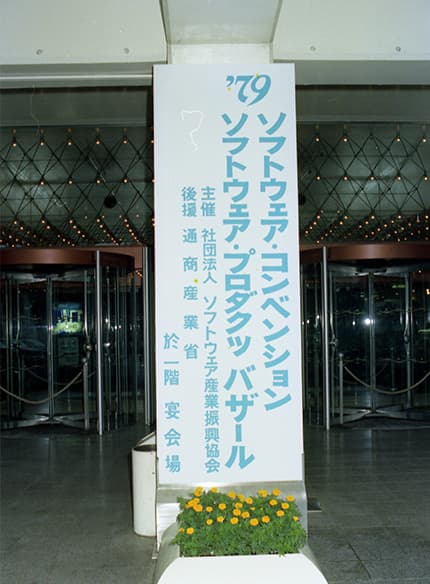
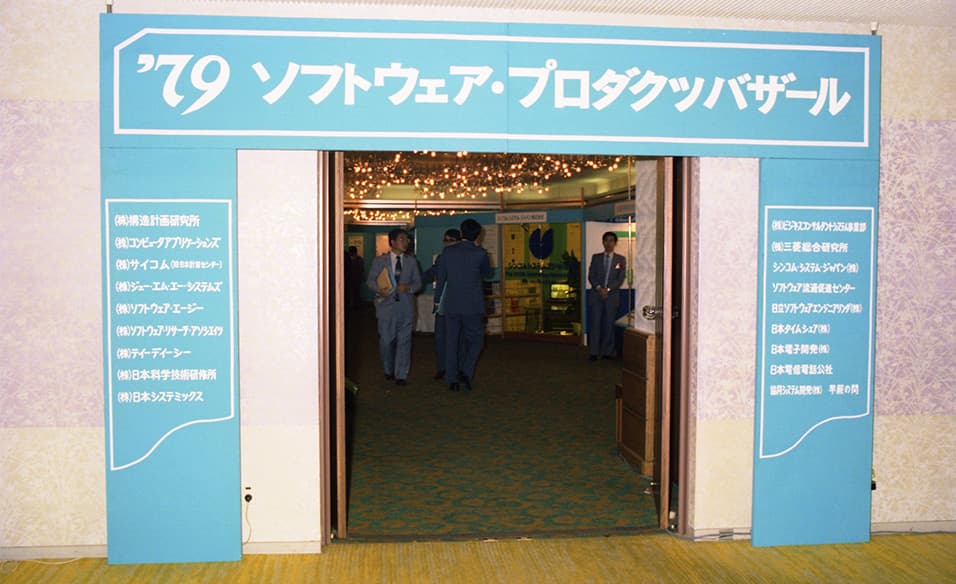
1974
Challenges in Fields Other than Structural Design,
Operations Research
In 1974, the OR (Operations Research) section was launched within KKE. Though the company's main business was structural design at the time of its founding, Makoto Hattori always had a strong urge in his mind to "create an organization with engineering as its main business that would bring together a comprehensive variety of specialists to deal with any problem in society." In 1963, he and Professor Takehiko Matsuda of Tokyo Institute of Technology attended the International OR Conference held in Oslo, Norway, as the representatives of Japan. Since then, he had been determined to challenge fields other than structural design by means of computers.
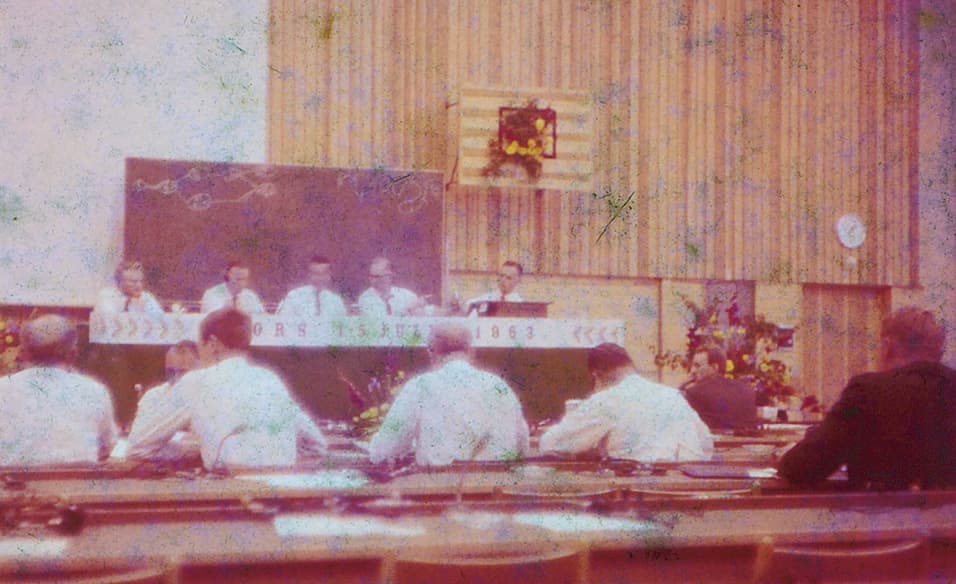
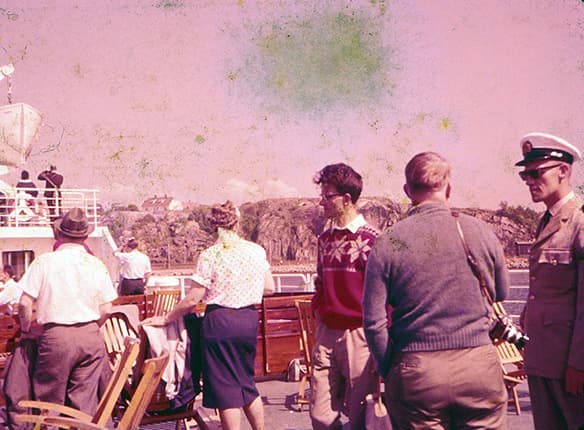
International Conference on Operations Research, held in Oslo, Norway, in 1963
1980's
When Kozo Keikaku Engineering Kumamoto Office was completed in the 1980s, we tackled the challenge of expanding software engineering technology. Today, we still regard this office as an important base of operations and are exploring ways to effectively leverage it.
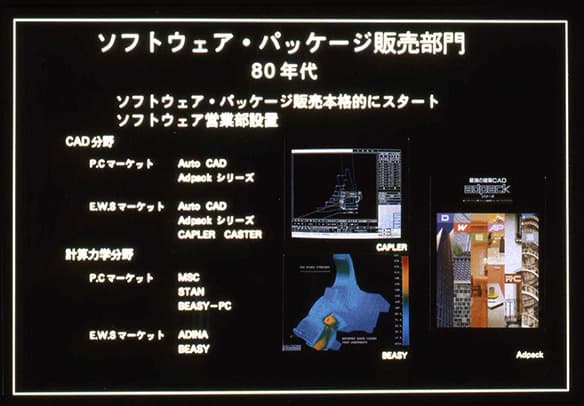
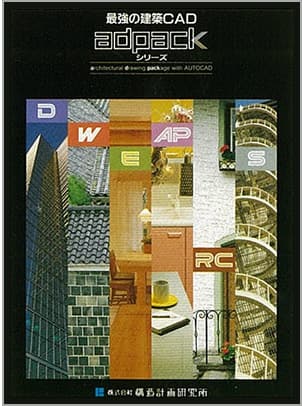
1980s
Started Selling Software Packages, Including CAD for Design Support
KKE has concluded the first agency agreement in Japan with Autodesk, the developer of "AutoCAD," the world's most advanced general-purpose CAD software of its time. KKE also tackled the development and sales of "adpack (architectural drawing packaging with AutoCAD)," its own packaged software for architectural designers using "AutoCAD" as a platform, and contributed to the widespread use of CAD in the construction industry.
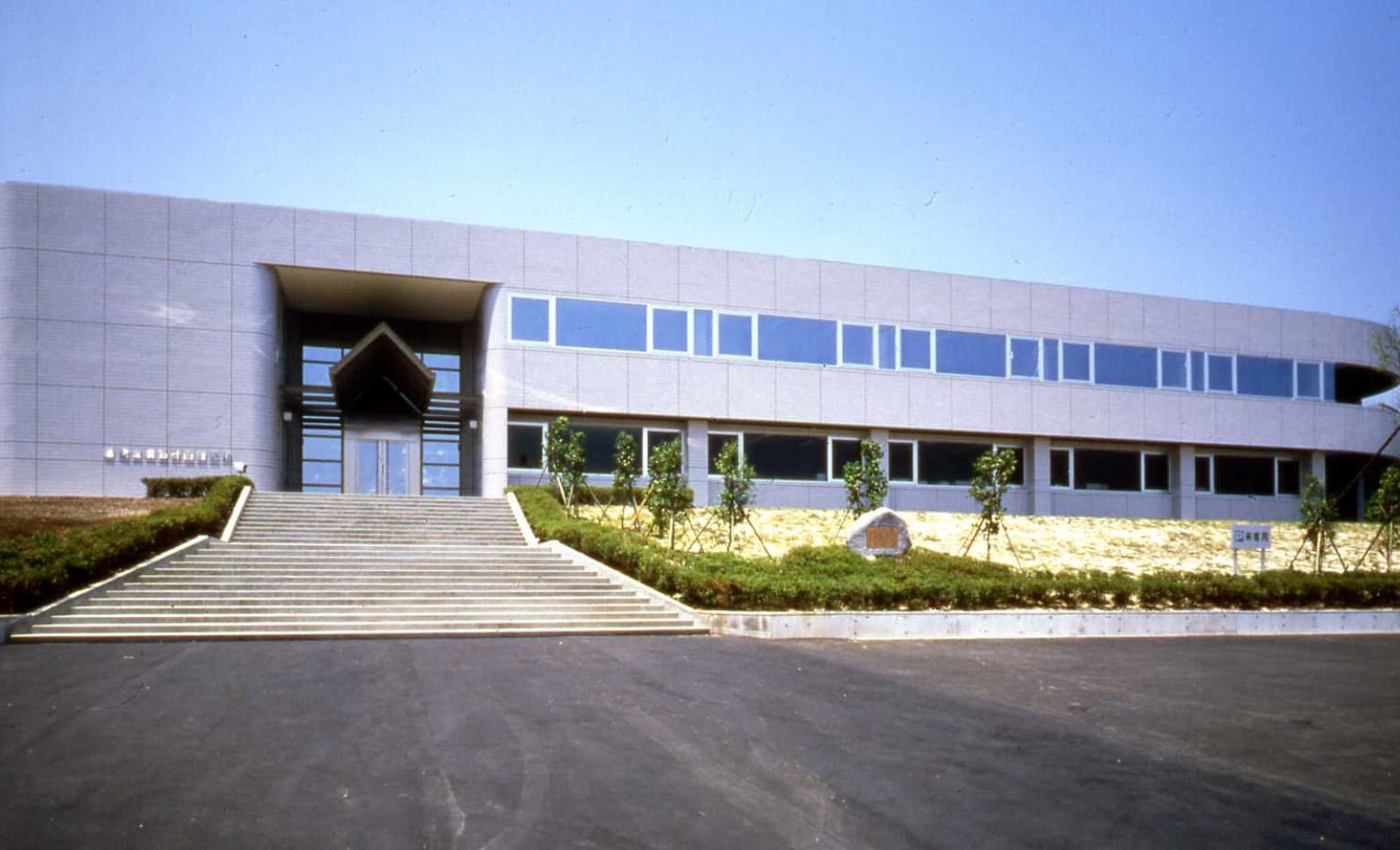
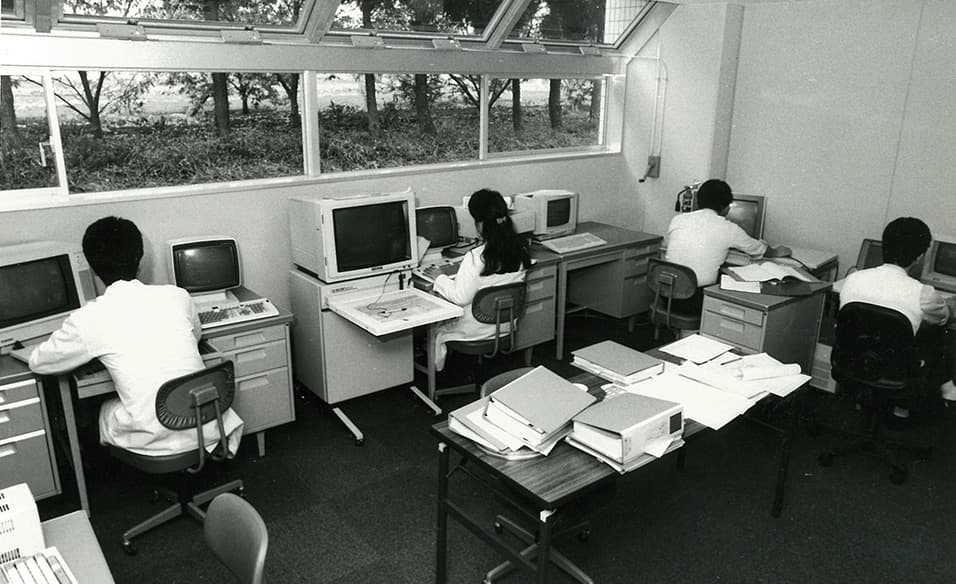
1986
Establishment of Kumamoto Office
Supporting the "Technopolis" concept proposed by the then Ministry of International Trade and Industry (MITI), KKE established the Kumamoto Office in Ozu-machi, Kumamoto Prefecture as a base for software development, with the cooperation of the then Governor of Kumamoto, Morihiro Hosokawa. Even now, 30 years after its establishment, many of the Kumamoto members play active parts within the company, most of whom are locals of Kumamoto.
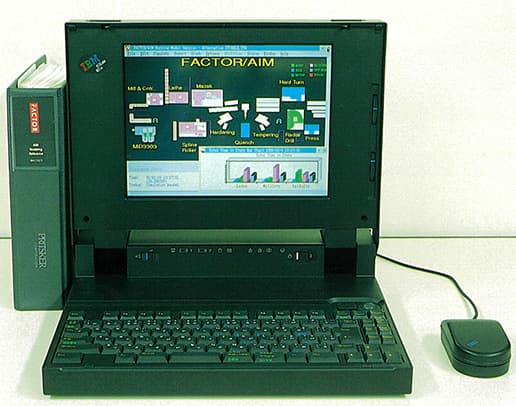
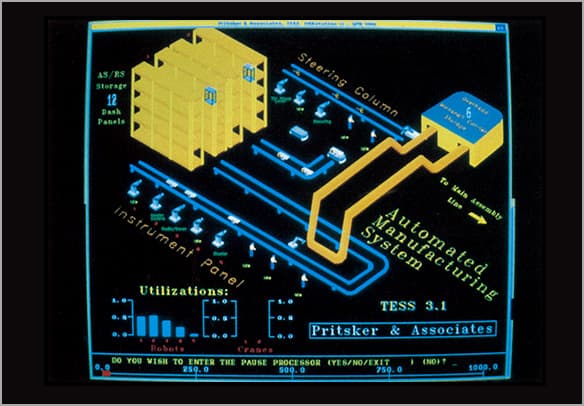
The late1980s
Development of Solutions for the Manufacturing Industry
In the late 1980s, KKE had started to develop CAD and other software packages targeting not only the construction industry but also the manufacturing industry. In the meantime, after working on the simulation language SLAM, these software packages were more commonly used in factory construction, leading to the expansion of the target industries.
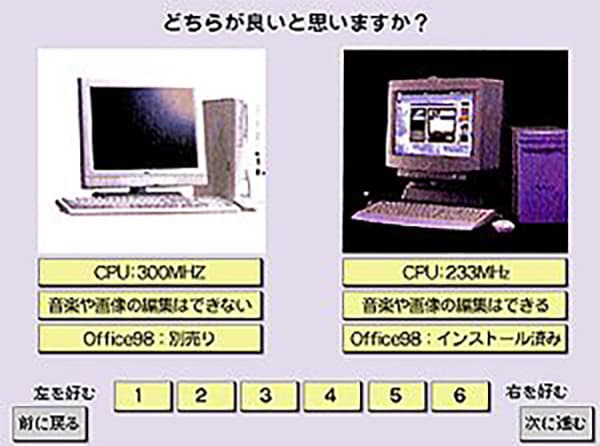
1987
Expanding into the Decision-Making Field
Since the founding, KKE has been engaged in the analysis and simulation of structures and natural phenomena, but it broadened these areas to include "human social activities" and expanding into the "decision-making field" in the late 1980s. KKE was among the first to implement computer interviewing in retail marketing consulting, and have accumulated experience in applying it to research on products and services in a diverse range of industries.
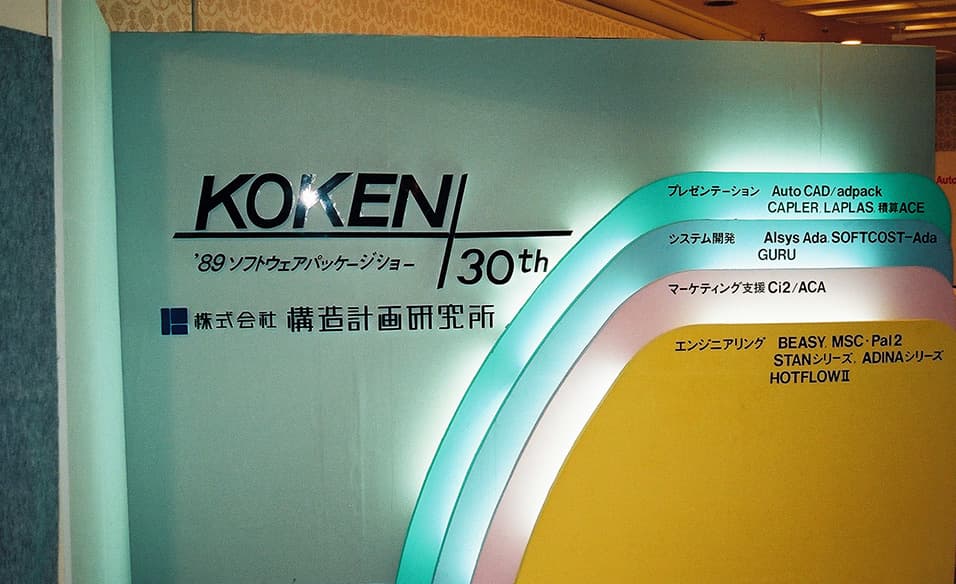
1989
"KKE Software show",An Intellectual Stimulus Event
(Later KKE Vision)
The Software Package Show was held at the Shinjuku Century Hyatt Hotel to celebrate the 30th anniversary of the company's establishment. This event was planned with the purpose of exchanging "intelligence" with visitors, and leads to "KKE Vision" which is currently held every autumn. The current "KKE Vision" draws about 1,000 visitors, and it has become an important occasion for us to have interactive communication with the visitors in order to achieve the society we are seeking for.
1990's2019
Information and communication consulting has contributed to the expansion of cell phones in Japan since the 1990s.
In the recent years, we have taken on the challenge of the new cloud business, and are now working on a wide range of solutions for various societal issues.
1990s
Challenges in the Housing Business
KKE took on the challenge of developing systems for housing manufacturers by utilizing the state-of-the-art CAD-related construction technology that it have cultivated over the years. The system development, which takes advantage of KKE's advanced technical capabilities in both structural calculation and programming development, has garnered a high level of trust and has been successfully adopted by many customers, and continues to be a major part of its business today.
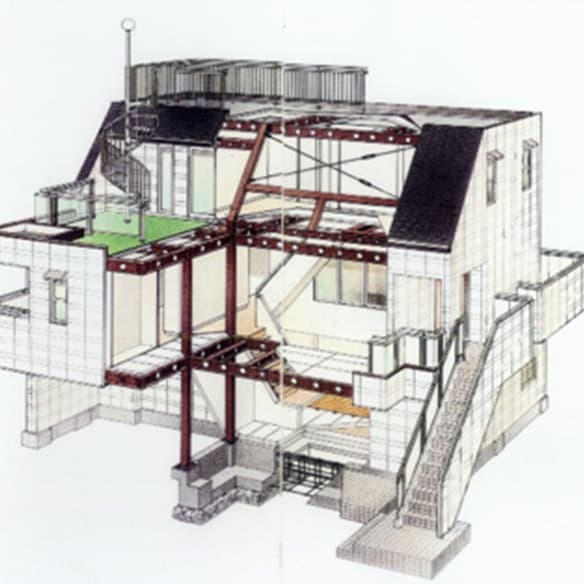
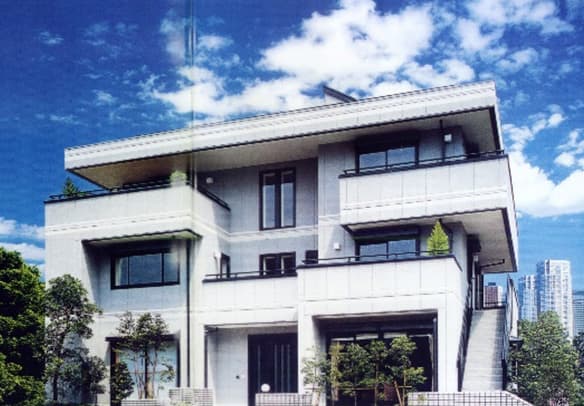
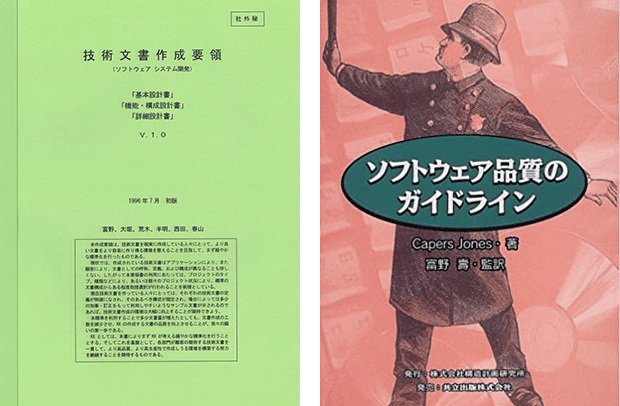
1990s
Commitment to
Quality
To standardize the systematic development of software, KKE formulated the "Green Book" to serve as the cornerstone of its quality assurance. Subsequently, in the 2000s, KKE established an in-house Quality Assurance Center to serve as a command center for quality assurance activities. The company is continuously working on the enhancement of the quality assurance system.
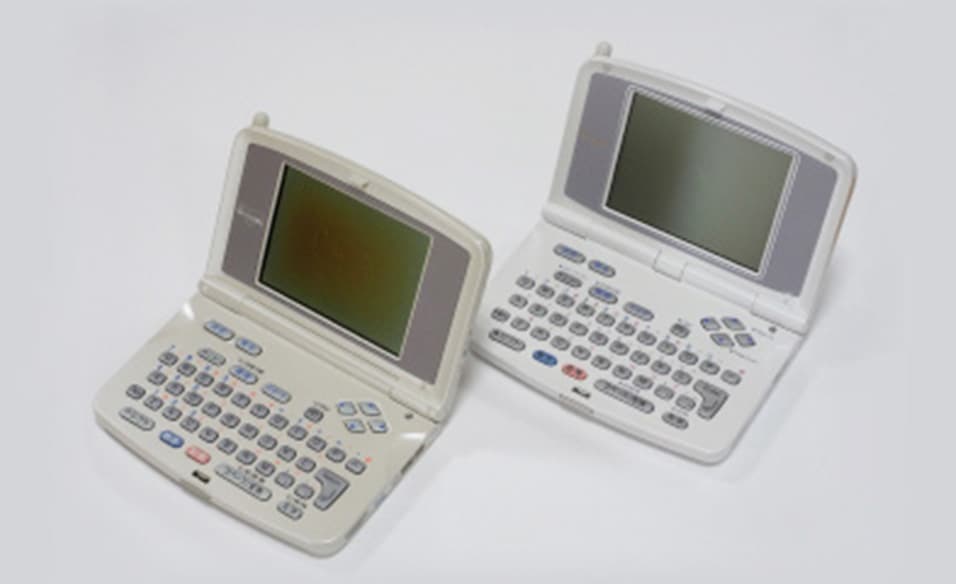
The late1990s
Challenges in the Mobile Communications Business
As The mobile phone service started in the late 80's in Japan, the demand for mobile communications surged enormously. At the meantime, the transition from analog to digital systems has started, revolutionizing the information communication. In the lead-up to the coming next-generation communications, KKE worked on the ray tracing method, which can calculate the delay time, an important parameter in the transition to digital, and contributed to the improvement of area quality by developing a station design system that could respond to changes in the usage patterns of third-generation cell phones. Moreover, KKE has been involved in projects that lead the information society, including development of PDAs with built-in radios that allow users to easily enjoy e-mail and the Internet.
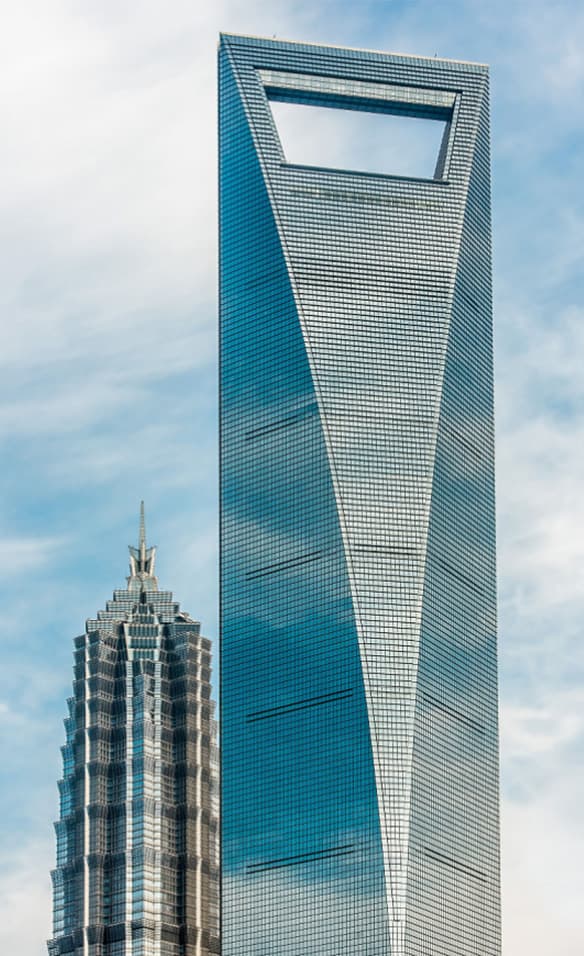
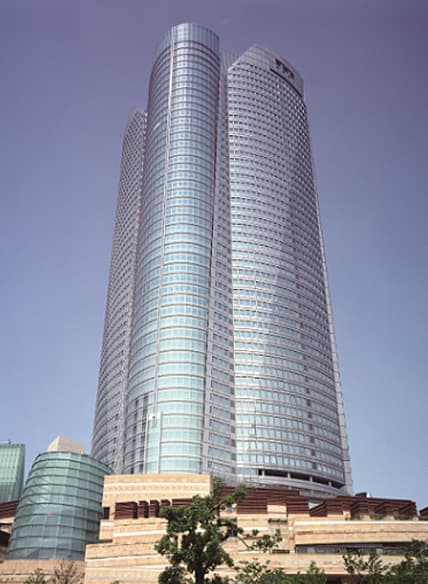
2000s
Roppongi Hills and Shanghai World Financial Center
In the structural design business, the main business pillar since the founding, KKE has focused on high-rise buildings and buildings with special structures, and have established an independent department responsible for earthquake-resitant and seismically isolated structures. In 2002, KKE participated in the Mori Building Roppongi Hills project, a large-scale project, and in 2007, KKE launched an office in Shanghai for structural design and worked on the Shanghai World Financial Center project. The design of such high-rise buildings had to take into account the everyday strong winds and seismic motions, and required a high level of technical expertise.
2011
Chisuikan, the World's First 3D Seismic Isolation Building
-Awarded the Architectural Institute of Japan Prize
Under the Asagaya Project, which was selected as a "leading model project for ultra-long-term housing" by the Ministry of Land, Infrastructure, Transport and Tourism, KKE began developing a 3D seismic isolation system. In 2011, after five years of development and design, KKE completed "Chisuikan," the world's first building with 3-D seismic isolation. For its outstanding achievement, KKE was awarded the 2012 Architectural Institute of Japan Award and the Japan Society of Seismic Isolation Prize.
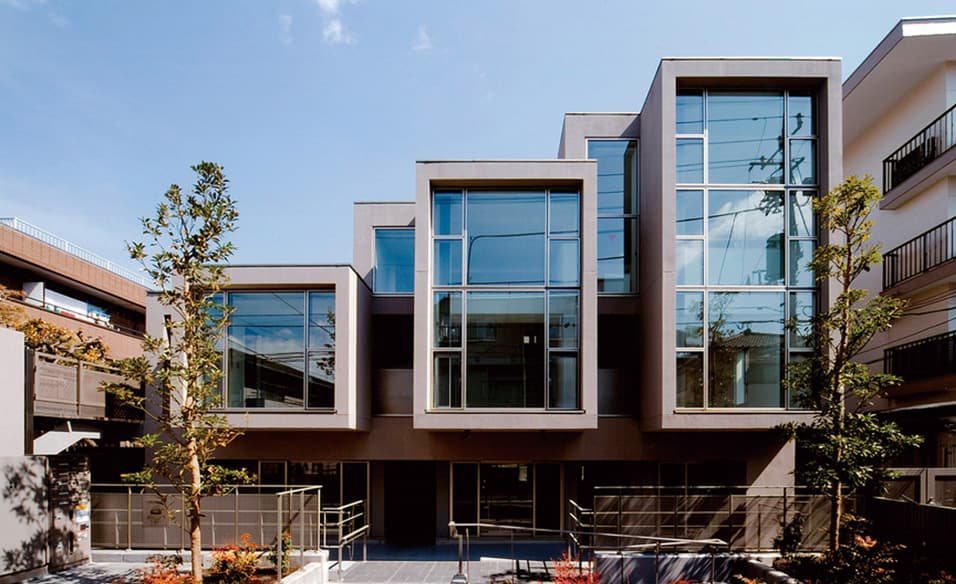
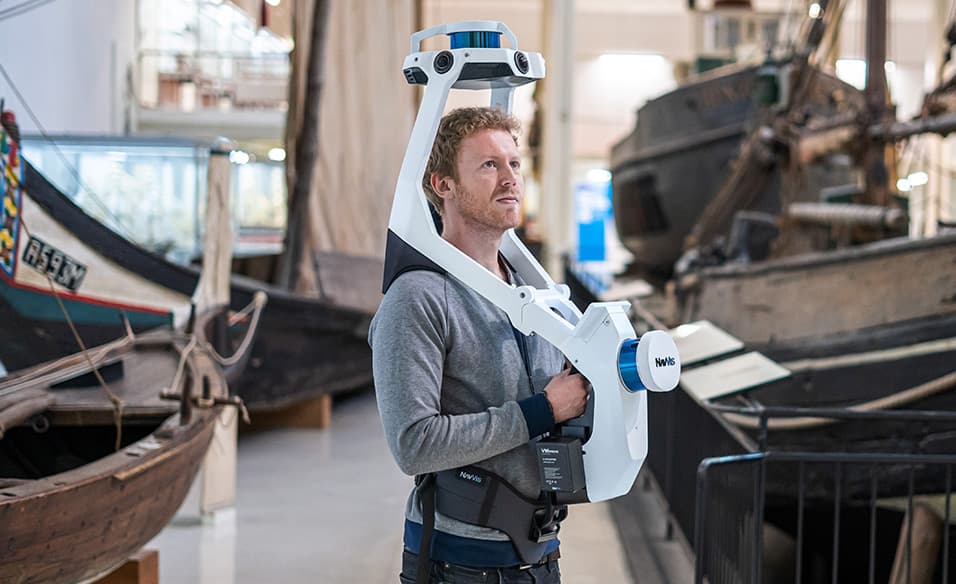
2013
Launching the Cloud Business
In 2013, KKE began distributing SendGrid in Japan, a cloud-based mail distribution service provided by SendGrid, a Colorado-based company that had been growing dramatically. In 2015, KKE began providing NavVis, a platform for 3D digitization of space. KKE is also taking on the challenge of cloud business to not only develop its already established business but also to bring new added value, including the launch of the Wi-Fi smart lock "RemoteLOCK" in 2017.
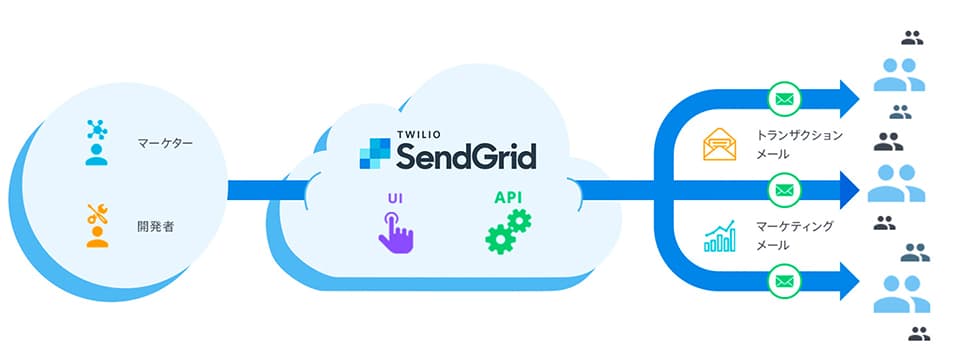
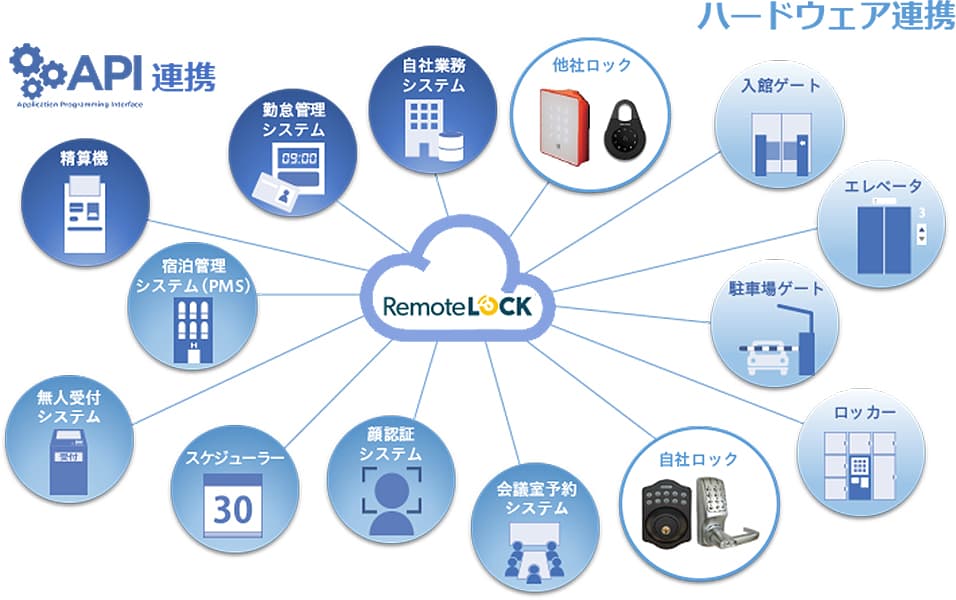
2019
60th Anniversary of the Company's Founding
On May 6, 2019, Kozo Keikaku Engineering celebrated its 60th anniversary. In August 2020, we expanded our office space and opened the "Nakano Sakaue Annex" to further expand our business. Our business, which began with the structural design of buildings, has now expanded into a variety of fields. We will continuously use the power of engineering to solve various social issues, based on our corporate philosophy of "bridging universities, research institutions and the business world.
